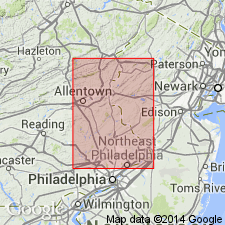
- Usage in publication:
-
- Limeport limestone
- Modifications:
-
- Named
- Dominant lithology:
-
- Limestone
- Sandstone
- AAPG geologic province:
-
- Appalachian basin
Summary:
Named the Limeport limestone in southeastern PA and west-central NJ for Limeport, Bucks Co., southeastern PA. Consists of dolomitic limestone formerly included at base of Allentown limestone. Characterized by thick sandy dolomitic limestone interbedded with shaly limestone and lenses of cross-bedded sandstone. Algal biostromes are a conspicuous feature throughout; more closely spaced toward top. Differs from Allentown, which it disconformably underlies, by being more sandy and shaly, less uniformly bedded, and having greater abundance of intraformational conglomerates, disconformities, mudcracks, and ripple marks. Thickness is 400 to 500 feet in type area. In most of Buckingham Valley where Allentown is absent, the Limeport underlies the Beekmantown(?) formation. Conformably overlies Leithsville limestone. The Limeport is of Late Cambrian (Dresbachian) age.
Source: GNU records (USGS DDS-6; Reston GNULEX).
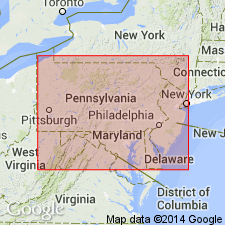
- Usage in publication:
-
- Limeport
- Modifications:
-
- Not used
- AAPG geologic province:
-
- Appalachian basin
Summary:
The Limeport Limestone of Howell and others (1950) is not used. Detailed mapping and petrographic study shows that unit is not valid. The rocks previously assigned to the Limeport are considered as the lower part of the Allentown Dolomite.
Source: GNU records (USGS DDS-6; Reston GNULEX).
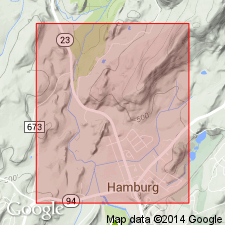
- Usage in publication:
-
- Limeport Member
- Modifications:
-
- Revised
- AAPG geologic province:
-
- Appalachian basin
Summary:
Revised the Limeport to the Limeport Member of the Allentown Formation in NJ. Unit is lower member of formation. Consists of gray, fossiliferous, cross-bedded dolomite that weathers buff-cream and is conglomeratic. Thickness is 400 to 700 feet. Overlies Wallkill Member of Leithsville Formation and underlies unnamed upper member of Allentown.
Source: GNU records (USGS DDS-6; Reston GNULEX).
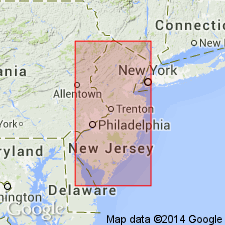
- Usage in publication:
-
- Limeport Member
- Modifications:
-
- Overview
- AAPG geologic province:
-
- Appalachian basin
Summary:
In NJ, two mappable units are present within the Allentown. Name Limeport Member assigned to lower part by Markewicz and Dalton (1977). Upper member referred to simply as Upper Allentown pending further work. The Limeport consists of finely- to medium-crystalline, thin to thick, cyclically bedded, light- to dark-gray dolomite. Oolites, cryptozoa, ripple marks, mud cracks, cross-bedding and chip conglomerates predominate. Many algal structures present. Limeport varies in thickness form 400 to 700 ft throughout most of the state. Upper member is equivalent to the Allentown as defined by Howell and others (1950). In the Hamburg area member thickness reaches 1200 ft while near Columbia, it thins to less than 500 ft. This unit is more massive and thick-bedded than the Limeport. Varies from a fine to medium crystalline, light to dark gray dolomite. Stromatolite and oolite beds are rare. Allentown overlies the Leithsville Formation and underlies the Rickenbach Formation. Allentown is Late Cambrian.
Source: GNU records (USGS DDS-6; Reston GNULEX).
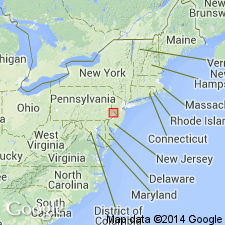
- Usage in publication:
-
- Limeport Formation*
- Modifications:
-
- Overview
- Dominant lithology:
-
- Limestone
- AAPG geologic province:
-
- Appalachian basin
Summary:
Though Limeport abandoned in the Buckingham Valley by Berg and others (1980) and Lyttle and Epstein (1987) who replaced the name with Allentown Limestone, authors here do not agree with their interpretations. They state 1) Buckingham Valley is 20 mi across strike from Allentown outcrop belt, 2) Limeport is 400 to 500 ft thick, whereas Allentown is 1,700 ft thick at Carpentersville, NJ, and 3) the Limeport lacks rocks typical of the upper half of the Allentown. Therefore, Limeport Formation is here accepted for use for Upper Cambrian rocks in Bucks Co., PA.
Source: GNU records (USGS DDS-6; Reston GNULEX).
For more information, please contact Nancy Stamm, Geologic Names Committee Secretary.
Asterisk (*) indicates published by U.S. Geological Survey authors.
"No current usage" (†) implies that a name has been abandoned or has fallen into disuse. Former usage and, if known, replacement name given in parentheses ( ).
Slash (/) indicates name conflicts with nomenclatural guidelines (CSN, 1933; ACSN, 1961, 1970; NACSN, 1983, 2005, 2021). May be explained within brackets ([ ]).

